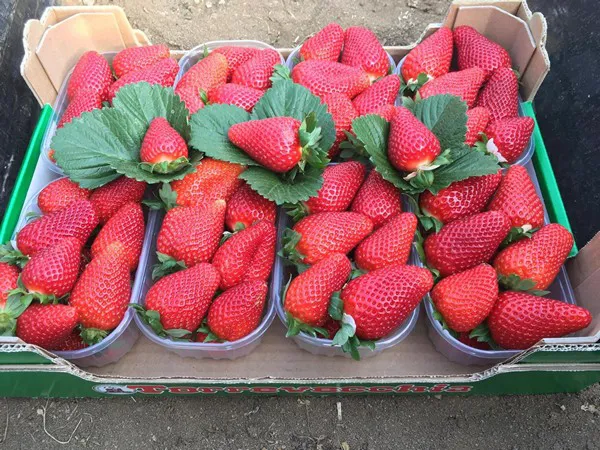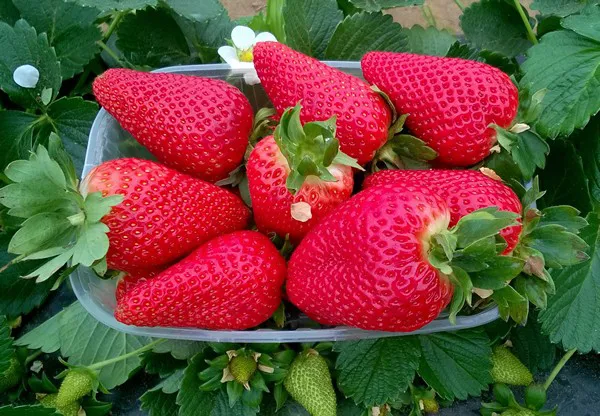Three new strawberry selections named LAM 09.68.4, LAM 11.23.22 and LAM 11.85.17 represent the first and most advanced results obtained within a Genetic Improvement Program carried out in the South of Italy as early as 2010, from the collaboration between ARSAC (Azienda Regionale per lo Sviluppo dell'Agricoltura Calabrese), CREA - Centro di Ricerca Olivicoltura, Frutticoltura e Agrumicoltura and Cooperativa Ortofrutticola Torrevecchia of Lamezia Terme (Catanzaro).
The new Italian strawberries have been tested in Huelva, Spain, during the last two years and are still fruiting. Early and productive, these strawberries are characterized by a good taste and seem to adapt well to the weather conditions in Huelva.
On 5 February 2021 a public notice for LAM selections was published on the CREA institutional website (https://www.crea.gov.it/avvisi) where companies interested in acquiring an exclusive breeding license contract for the purpose of marketing in the European Union for one or more selections can apply before the deadline of 25 February 2021.
"The three selections share some key points such as the early ripening combined with a good or high productivity, the robustness of the plants that does not require particularly committed crop care, and above all, a good resistance to the main pathogens of the leaf and root system. Moreover, the fruit holds well on the plant and after the harvest (consistency and color) even in the months characterized by high temperatures. These are all factors that make them suitable for low-impact production techniques, which are increasingly in demand,” said Maurizio Funaro of ARSAC.
These plants have been tested for years not only in the area of Lamezia Terme (CZ), where about 120 hectares of strawberry are permanently cultivated, but also in different growing areas of the Mediterranean basin. They have proven to perform well, mainly due to the precocity of ripening, combined with productivity and quality of the fruit. "We believe that this new genetic seedstock, fully adapted to the specific soil and climate conditions of Lamezia, is ready to be successfully cultivated also in other areas of the Mediterranean basin characterized by mild winters," said CREA breeders Gianluca Baruzzi and Paolo Sbrighi.
 LAM 11.85.17
LAM 11.85.17
LAM 11.85.17 is the earliest of the three varieties, with harvests reaching 400 g/plant in January-March, and even higher levels if rooted plants are used. Fruits have a medium-high caliber that shrinks only in the last stage of the production cycle, with a conical shape, regular, uniform deep red color and high texture, even when temperatures rise. The taste is good thanks to its good sugar content and a balanced acid-sugar ratio. The robustness and vigor of the plants make them particularly suitable for organic cultivation.
 LAM 09.68.4 Selection
LAM 09.68.4 Selection
LAM 09.68.4 is a robust and vigorous plant that combines an early ripening of the fruits with a high productivity. The fruits are of a high caliber that shrinks only during the last part of the production cycle and have a regular conical shape and uniform deep red color. The taste is good, thanks to a high sugar content and a balanced acid-sugar ratio.
 LAM 11.23.22 selection
LAM 11.23.22 selection
LAM 11.23.22 is interesting for its precocity and for the appearance of the bright red fruits, which keep their attractive color even with high temperatures. This last aspect is hardly seen among the varieties currently cultivated in Calabria. The production flow and the size of the fruits are consistent throughout the entire production cycle. The taste and aroma of the fruits are good.
